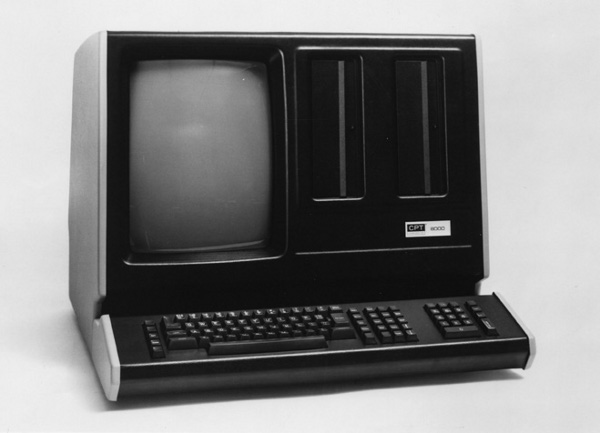| Tikalon Blog is now in archive mode.
An easily printed and saved version of this article, and a link
to a directory of all articles, can be found below: |
|
This article |
| Directory of all articles |
Electronic-Book Readers
July 20, 2010
In the early days of computing, I was forced to read from a small screen that presented green characters on a black background. Display technology wasn't well developed in those days, and the only efficient
cathode ray tube (CRT)
phosphor emitted green light. Needless to say, reading was difficult. Shortly thereafter, I was able to buy a CRT with amber characters on a black background, which was somewhat of an improvement. Eventually, displays were developed that presented black characters on a white background in simulation of a printed page. These were used to good advantage in the
CPT Word Processors that populated corporations in large numbers before the advent of personal computers. Quite a few of my scientific papers were typed on these, and printed on a
Diablo daisy-wheel printer.

The CPT Series 8000 Word Processor. Source: Charles Babbage Institute of the University of Minnesota.
Eventually, CRTs were replaced by large
liquid crystal displays on desktop computers, and somewhat smaller LCD displays on laptop computers and
netbooks. The text on the 19-inch LCD display on which I'm writing this article is quite readable, but the advent of handheld electronic book readers, and devices such as the
iPad, makes advanced display technology especially important. A recent study by the Nielsen Norman Group[1,2] has shown that people read about 10% more slowly when using an iPad or
Kindle than reading from ink on paper. This small study - only 24 participants - had the participants read
Hemingway short stories. The reading skill of each reader was verified to be at least at a high school level by the REALM literacy test[3], a quick and dirty test that actually gives a valid result. The stories took about seventeen minutes to read. Each user was tested with four media engines - a printed book, a personal computer, an iPad, and a Kindle. To improved
statistical validity, the sequence of devices was rotated between participants. The reading times were noted for each device, and the participants were quizzed for comprehension.
Reading speed was less than the printed page for both the iPad (6.2%) and the Kindle 2 (10.7%). Although the difference in reading rate between the electronic readers and the printed page is significant, the difference between readers is much less so because of the small sample. What's interesting is that books and e-readers scored at about the same level of satisfaction, and they scored much above personal computers. Other comments were the weight of the iPad (too heavy), and the contrast on the Kindle (too low). Books were perceived as more relaxing (probably because you aren't bothered by high price,
disappearing content or battery life).
Handheld display screens increase in quality every year. The iPhone 4 has a 326 dots-per-inch (dpi) display, and it's considered to be a
retinal display; that is, it has as much resolution as the human eye requires when it's held at its normal viewing distance.
References:
- Jakob Nielsen, "iPad and Kindle Reading Speeds," Jakob Nielsen's Alertbox, July 2, 2010.
- David Murphy, "Reading on iPad and Kindle Up to 10 Percent Slower Than Paper and Ink, Study Finds," PCMag.com, July 4, 2010.
- Rapid Estimate of Adult Literacy in Medicine, Revised (PDF File), adultmeducation.com
Permanent Link to this article